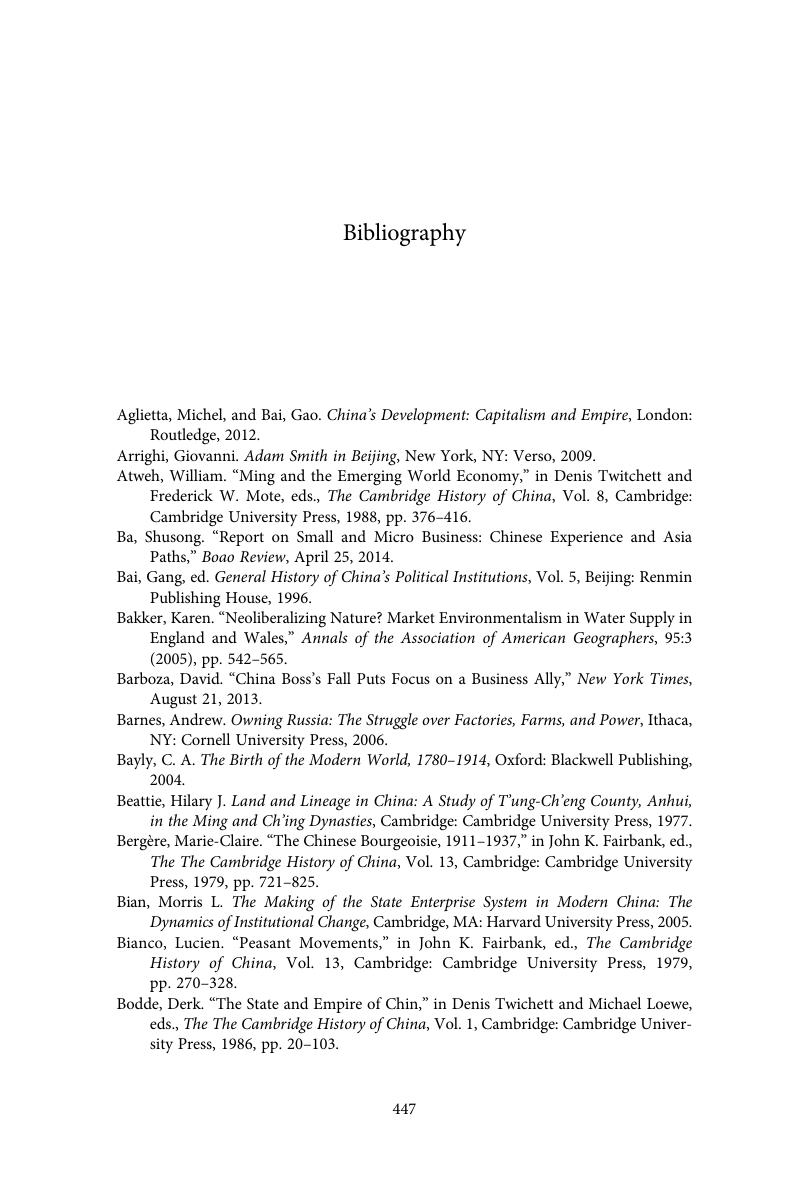Bibliography
Published online by Cambridge University Press: 31 August 2018
Summary

- Type
- Chapter
- Information
- Market in StateThe Political Economy of Domination in China, pp. 447 - 468Publisher: Cambridge University PressPrint publication year: 2018



